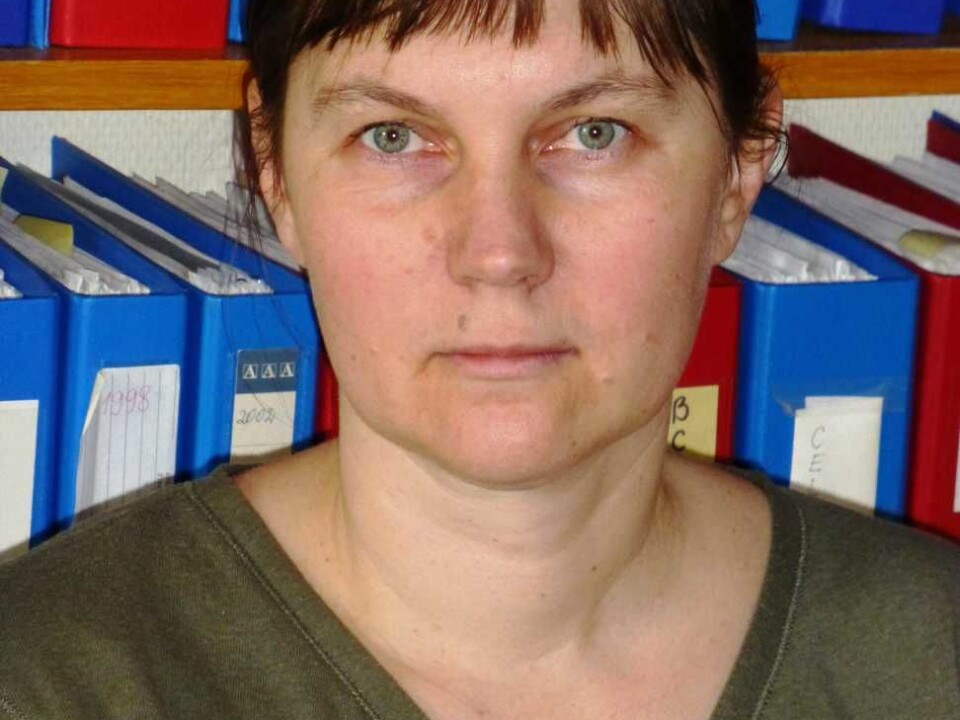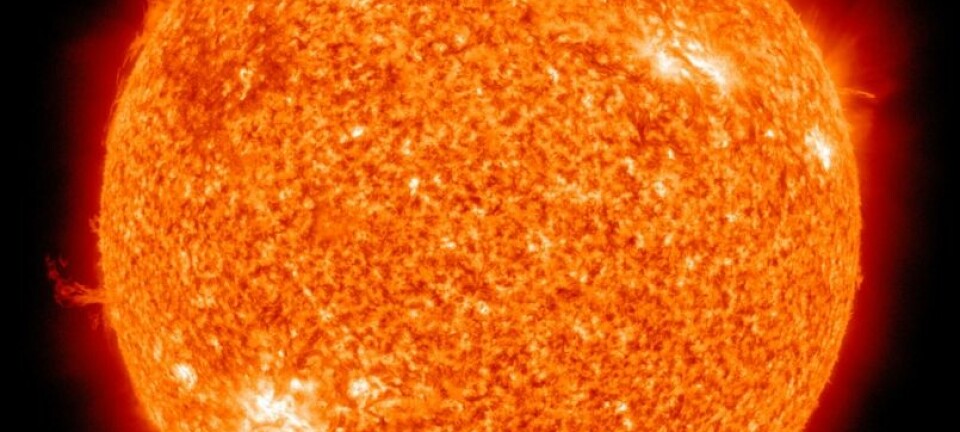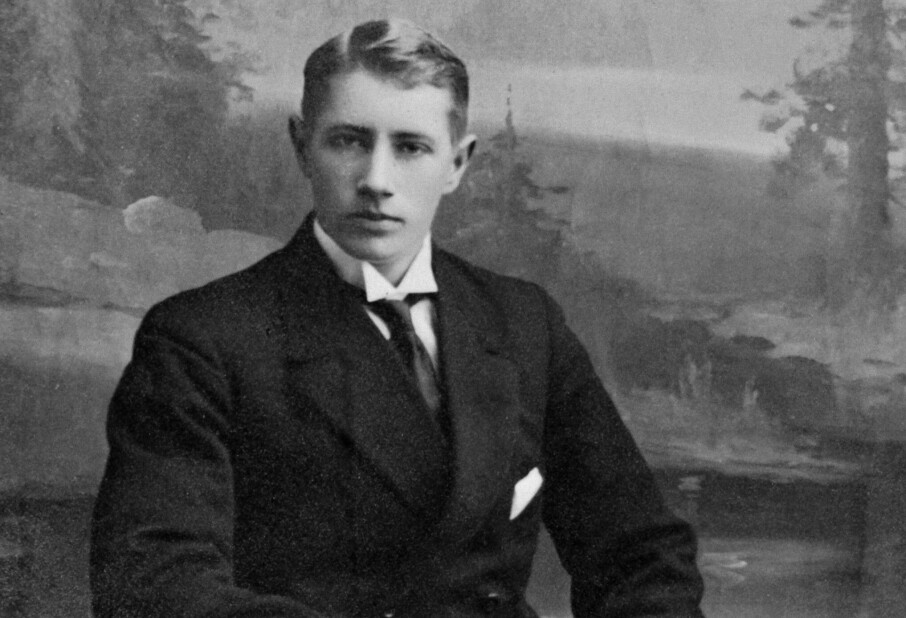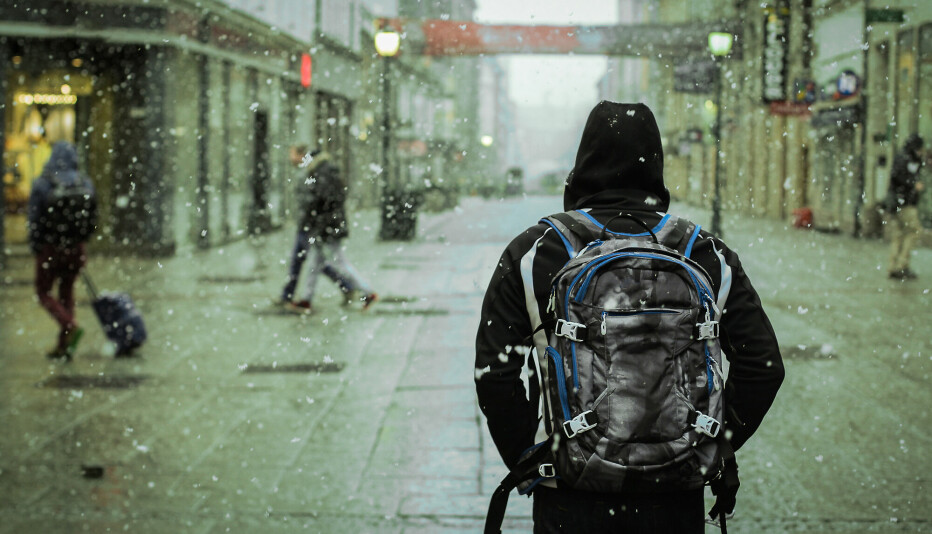
Save your skin in the sun
Twenty minutes in the sun is good for you but beware of getting burned.
Denne artikkelen er over ti år gammel og kan inneholde utdatert informasjon.
Summer is approaching and people in the North look forward to hot days filled with sunshine. But how much sun is healthy?
It’s known that sunlight makes us happy and that solar radiation helps keep many diseases at bay.
We’re harming ourselves when we get sunburned, but given enough time, our bodies can repair sun damage.
“Very light-skinned Norwegians can only take about ten or twenty minutes of sun,” says Asta Juzeniene, a cancer researcher at the Oslo University Hospital.

The time of year, hour of day and our individual hues determine the amount of sun that’s good for us.
“Dark-skinned persons can stand more sun and rarely get skin cancer, whereas white people are more easily burned and should avoid the sun,” she says.
When you get sunburned what you see and feel is your skin being damaged by the sun. If you were sunburned often as a teenager you run a bigger risk of getting skin cancer.
It’s always smart to take a break from the sun, ideally a long break rather than a short one.
Your body heals sun damage if you give it a chance

“DNA damage, or genetic damage, starts already during our first minutes in the sun. Our bodies can heal this injury but only if we get out of the sun for several hours,” she says.
So if you are at the beach working on your tan several days in a row, your body can’t repair itself. This is what can lead to skin cancer or melanoma.
When Juzeniene advises against more than ten or twenty minutes maximum exposure to the sun, she is talking about exposure without any sunscreen. The lightest Nordic blondes can enjoy a lot more sun if they rub themselves in with a good lotion or sun block that protects against UVA and UVB radiation.
UVB provides vitamin D, but it can also give us skin cancer. UVA is what gives us wrinkles and pigmentation spots such as freckles.
“A light-skinned person can spend about 100 minutes in the sun using a factor ten suntan cream. But if you swim or get sweaty, this reduces the duration of the protection.”
Lower factors require more frequent applications
In principle it doesn’t matter that much if you use a low or a high factor suntan cream, according to the researcher. The issue is how frequently you re-apply it.
“With a lower factor you need to re-apply the cream more often to get sufficient protection.”
Nevertheless, she says, it could be advantageous to use a really high sun factor, preferably up around 50, if you are very light-skinned and plan to spend a holiday in a sunny country. This is because the UV index, the intensity of solar radiation, is much higher in southern climates than in Northern Europe.
The UV index
“On a fine summer day in Norway the UV index can reach about 5, but in Spain we see an index rising above 10.”
Juzeniene says a UV index of 1-2 is harmless. When it tops 3 and heads toward 5, which it can easily do in the summer, most people need to use some type of sun block.
The advice about a maximum of ten to twenty minutes in the sun without a lotion applies to a UV index above 5.
Check the UV index before you leave on holiday
For a UV index above 10, she doesn’t recommend any sunning at all.
“In that case you should apply a sun block with a high factor before going outdoors.”
Norwegians needn’t travel any further than to Spain or Egypt before this takes effect.
Another thing to keep in mind − solar radiation is most intense between noon and 3 PM, so it’s a good idea to stick to the shade in that period.
Although we need to know about the risks, we shouldn’t forget about all the good sides of sunshine.
Benefits from a few minutes without a lotion
“In Norway we don’t get enough vitamin D,” she says.
The lotion that protects you against damaging radiation also prevents synthesis of vitamin D, because the sun is our major source of the vitamin.
“Nearly 90 percent of all the vitamin D we get in Norway is from sunlight and the remaining 10 percent is ingested.”
Vitamin D deficiencies are found in patients with osteoporosis, rheumatism, cardiovascular diseases and diabetes.
Juzeniene adds that people who suffer from psoriasis can also benefit from sunbathing themselves – receiving so-called phototherapy.
“We don’t know whether this benefit comes from vitamin D or something else that happens within the skin patient’s body.”
Cheery rays
The sun has another positive effect on us besides triggering the production of vitamin D.
“People are happier in the sun because the rays trigger a release of endorphins in our bodies.”
Small doses of sun are really good for us, whereas large doses can be really bad. “We need to maintain a balance,” she says.
Fighting cancer with tanning salons?
A study conducted at the Norwegian Radium Hospital indicates that sunlight can also help certain cancer patients.
The study showed that patients with prostate cancer, breast cancer and some other cancers have a 20 percent higher survival rate when diagnosed in the summer, when their vitamin D levels are higher, than when diagnosed in winter.
Some researchers say that sunbathing is hazardous no matter what and they claim that any positive effects are outweighed by the downsides.
So the jury is out as regards light tanning or none at all. But the vote is just about unanimous in favour of protecting against too much sun – and once again − we really need to keep from getting sunburned.
-----------------------------
Read this article in Norwegian at forskning.no
Translated by: Glenn Ostling
































